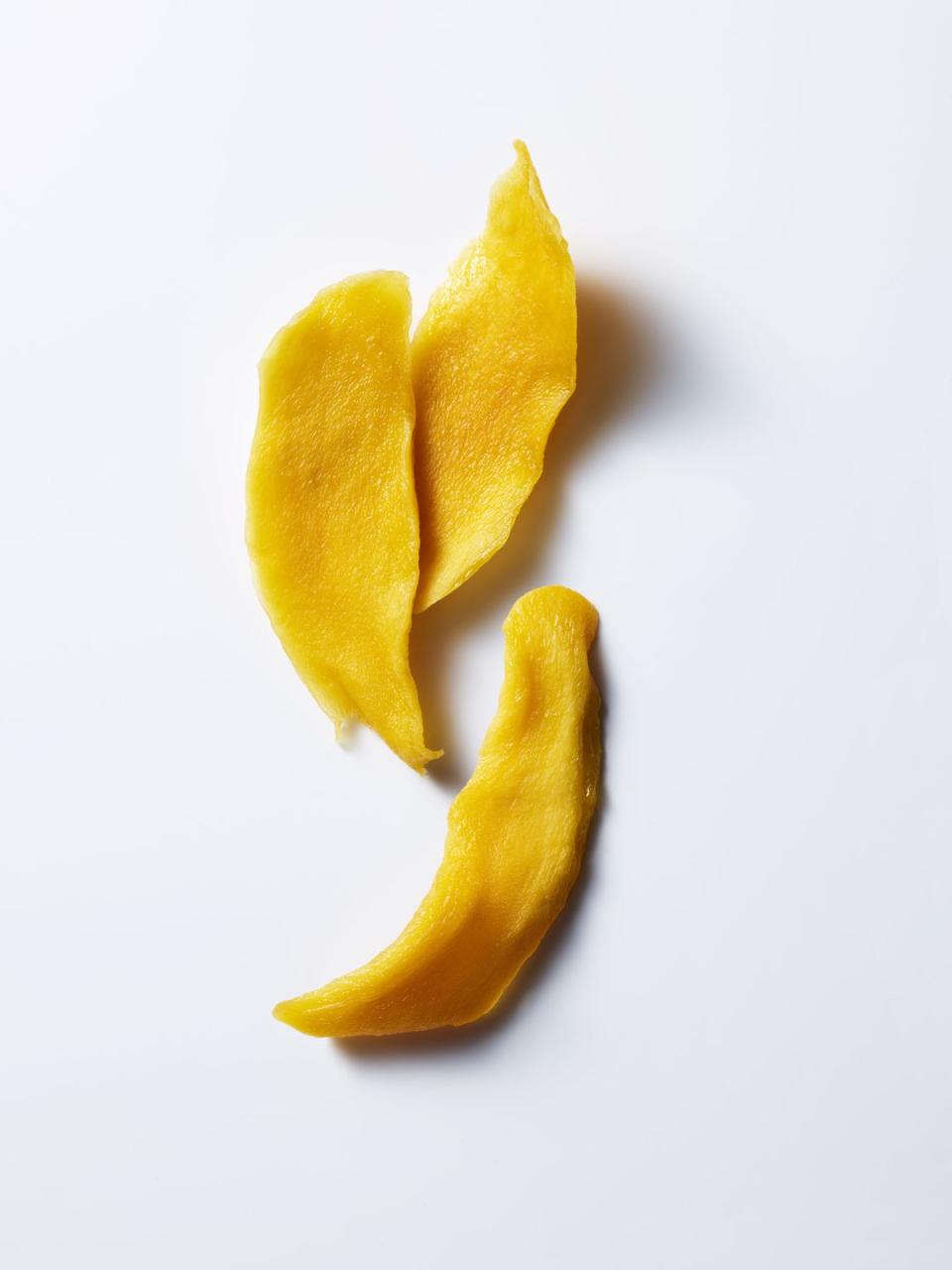Is Dried Fruit Actually Healthy?

Dried fruit is the snack du jour-delicious, portable, and (mostly) healthy, and brands like Peeled, Bare, and even Trader Joe’s are regularly introducing more types.
But this sweet treat can be less sunny than it looks. Take note with these tips and tricks from Women’s Health advisory board member Keri Glassman, R.D.
Dried fruit comes with a lot of fiber, but also a lot of calories.
Like fresh fruit, the dehydrated kind has vitamins that are antioxidants. But because of the lack of moisture, its contents are much more concentrated. That includes fiber, which, though good for you, can cause cramps and bloat, especially if you don’t typically eat a lot of it.
It also has more sugar, and thus more calories. Even unsweetened fruit has sugars that aren’t always easy to digest in big amounts. Making matters worse? Sulfites (a common preservative) can cause diarrhea and headaches in some. Look for sulfite-free.

But it’s so handy!
Done right, eating dried fruit can help you avoid less nutritious snacking. If you love chips, try baked or freeze-dried fruit for a nice crunch. Craving gummies? Shop for soft varieties. And a spiced flavor, like chili-dusted mango, makes it harder to down a whole bag at once.
Eat it the right way:
1. Drink water. Fiber helps you poop, but if you’re dehydrated, it will also soak up whatever fluid you’ve got left. The result? Constipation. Sipping as you eat can help.
2. Re-portion. Use individual plastic baggies or containers to divide fruit into trackable smart servings. That’s two pieces for bigger fruits (apricots, mango and pear slices)-less than the package might tell you!-and two tablespoons for smaller bites (cranberries).
3. Add protein. When you pair your snack with a protein or fat source, like nuts or Greek yogurt, it becomes more filling, so you’re less likely to go overboard on sugar.
This article originally appeared in the September 2018 issue of Women’s Health. For more great advice, pick up a copy on newsstands now.
('You Might Also Like',)

